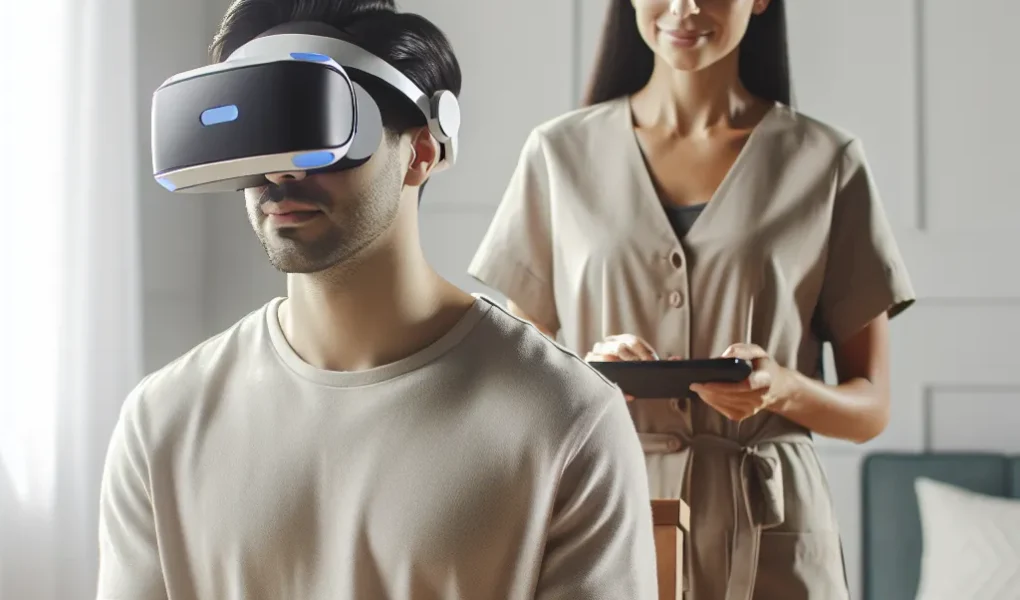Introduction to Anxiety Disorders and Current Treatment Methods
Anxiety disorders are among the most prevalent mental health conditions, affecting millions of people worldwide. These disorders encompass a wide range of conditions, including generalized anxiety disorder, panic disorder, social anxiety disorder, and specific phobias. The hallmark of these disorders is excessive fear and worry, often leading to significant distress and impairment in daily functioning. Current treatment methods for anxiety disorders typically include a combination of psychotherapy, medication, and lifestyle modifications.
Cognitive-behavioral therapy (CBT) is a well-established psychotherapeutic approach for anxiety disorders, aiming to modify maladaptive thought patterns and behaviors. Medications such as selective serotonin reuptake inhibitors (SSRIs) and serotonin-norepinephrine reuptake inhibitors (SNRIs) are commonly prescribed to manage symptoms of anxiety disorders. Additionally, lifestyle changes, stress-reduction techniques, and self-help strategies are often incorporated into treatment plans to provide comprehensive care for individuals with anxiety disorders.
Despite the availability of these treatment options, a substantial number of individuals with anxiety disorders do not achieve full remission of symptoms or experience bothersome side effects from medication. This has prompted the exploration of novel therapeutic approaches, including virtual reality (VR) therapy, as a potential alternative or adjunct to traditional treatments for anxiety disorders. The efficacy of VR therapy in the context of anxiety disorders is an area of growing interest and is the focus of this article.
Understanding Virtual Reality Therapy and its Potential Benefits
Virtual reality (VR) therapy is a cutting-edge treatment approach that has shown promising results in addressing anxiety disorders. By creating immersive, computer-generated environments, VR therapy aims to simulate real-life situations that trigger anxiety in a controlled and safe setting. This allows individuals to confront their fears and anxieties in a gradual and controlled manner, ultimately helping them build resilience and coping strategies.
One of the key benefits of VR therapy is its ability to provide exposure therapy in a highly personalized and tailored way. Clinicians can modify virtual environments to suit each individual’s specific fears and triggers, ensuring that the exposure is targeted and effective. Additionally, VR therapy offers a level of engagement and interactivity that traditional therapy methods may not provide, leading to increased motivation and adherence to treatment.
Research has shown that VR therapy can produce significant reductions in anxiety symptoms for a variety of anxiety disorders, including phobias, social anxiety, and post-traumatic stress disorder. Furthermore, many individuals report feeling more confident and better equipped to face real-world anxiety triggers after undergoing VR therapy.
As technology continues to advance, the potential for VR therapy to become more accessible and cost-effective is promising. With further research and development, VR therapy could revolutionize the treatment of anxiety disorders, offering a unique and valuable tool for mental health professionals.
Recent Studies on the Effectiveness of Virtual Reality Therapy for Anxiety
Recent studies have shown promising results regarding the effectiveness of virtual reality therapy for anxiety disorders. Virtual reality therapy, or VR therapy, has the potential to provide a novel and immersive approach to treating anxiety, offering a safe and controlled environment for individuals to confront their fears.
A study published in the Journal of Anxiety Disorders in 2020 conducted a meta-analysis of 17 randomized controlled trials involving VR therapy for various anxiety disorders, including social anxiety, phobias, and post-traumatic stress disorder. The findings revealed that VR therapy produced significant reductions in anxiety symptoms compared to traditional therapies, with the effects persisting at follow-up assessments.
Another recent study, published in the Journal of Medical Internet Research, investigated the use of VR therapy in the treatment of panic disorder. The results indicated that VR-based exposure therapy led to substantial improvements in panic symptoms and avoidance behavior. Moreover, participants reported high satisfaction with the VR treatment, emphasizing its acceptability and engagement.
These recent studies underscore the potential of virtual reality therapy as a valuable tool in the treatment of anxiety disorders. By creating realistic and customizable simulations of anxiety-provoking scenarios, VR therapy allows individuals to gradually confront and overcome their fears in a controlled and supportive environment, ultimately leading to reduced anxiety symptoms and improved psychological well-being.
Challenges and Limitations of Implementing Virtual Reality Therapy
While virtual reality therapy for anxiety disorders shows promise, there are several challenges and limitations that need to be addressed for its effective implementation. One of the key challenges is the cost associated with developing and maintaining virtual reality systems. High-quality virtual reality equipment and software can be expensive, making it difficult for some healthcare facilities to invest in this technology.
Another limitation is the need for specialized training for therapists to use virtual reality therapy effectively. Therapists require training not only in operating the virtual reality equipment but also in tailoring the virtual environments to suit each patient’s specific needs. Additionally, there is a lack of standardized protocols for virtual reality therapy, which can make it challenging to ensure consistent and effective treatment across different healthcare settings.
Furthermore, not all patients may be comfortable or suitable candidates for virtual reality therapy. Some individuals may experience increased anxiety or discomfort when exposed to virtual environments, leading to the need for careful screening and assessment before implementing this form of treatment.
Despite these challenges and limitations, ongoing research and development in the field of virtual reality therapy are aimed at overcoming these obstacles and making this innovative treatment more accessible and effective for individuals with anxiety disorders.
Future Directions and Considerations for Virtual Reality Therapy in Anxiety Treatment
Certainly! Here’s the requested article fragment:
Future Directions and Considerations for Virtual Reality Therapy in Anxiety Treatment
As virtual reality (VR) therapy continues to show promise in the treatment of anxiety disorders, researchers are now exploring future directions and considerations for its implementation. One area of interest is the customization of VR environments to cater to individual preferences and specific phobias. By incorporating personalized elements into the VR experience, such as familiar surroundings or gradual exposure to feared stimuli, therapists can tailor the treatment to each patient’s unique needs.
Moreover, advancements in VR technology hold potential for creating more immersive and realistic simulations, further enhancing the effectiveness of therapy. The use of multisensory integration, including olfactory and tactile sensations, can contribute to a more comprehensive and impactful therapeutic experience. Additionally, the development of portable VR devices may increase accessibility to treatment, allowing patients to engage in therapy outside of clinical settings.
Ethical considerations also play a crucial role in the future of VR therapy for anxiety. Maintaining patient privacy and data security, as well as ensuring informed consent and safety protocols, are paramount as this technology becomes more integrated into mental health care. Research on the long-term effects and cost-efficiency of VR therapy compared to traditional treatment methods is essential for establishing its efficacy and widespread adoption.
In conclusion, the future of virtual reality therapy in anxiety treatment holds exciting possibilities, from personalized and immersive experiences to ethical and practical considerations. Continued research and innovation in this field are key to unlocking the full potential of VR as a valuable tool in addressing anxiety disorders.
Remember to optimize the content for the selected keywords related to VR therapy and anxiety treatment.
Conclusion: The Promising Role of Virtual Reality Therapy in Addressing Anxiety Disorders
In conclusion, the efficacy of virtual reality (VR) therapy in addressing anxiety disorders presents a promising avenue for the future of mental health treatment. The immersive nature of VR environments allows individuals to confront and navigate their anxieties in a controlled and supportive setting, providing a unique opportunity for exposure therapy. Research has shown that VR therapy can effectively reduce anxiety symptoms and improve overall quality of life for individuals struggling with various anxiety disorders.
Furthermore, the customizable nature of VR environments enables therapists to tailor scenarios to each patient’s specific fears and triggers, offering a personalized treatment approach that traditional therapies may not always provide. This individualized aspect can lead to more targeted interventions and better outcomes for those undergoing VR therapy for anxiety.
As VR technology continues to advance and become more accessible, the potential for integrating VR therapy into standard practice for anxiety disorders appears increasingly promising. Moreover, the ability to remotely administer VR therapy can improve access to treatment for individuals who may struggle to attend in-person sessions due to various barriers.
While additional research and clinical trials are necessary to further establish the long-term effectiveness of VR therapy for anxiety disorders, the current body of evidence suggests that it holds significant potential as a valuable therapeutic tool in addressing these prevalent mental health conditions.

